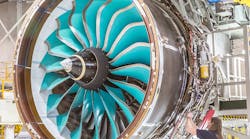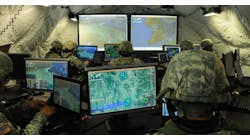Rolls-Royce has withdrawn from the competition underway by Boeing Commercial Airplanes to select a turbofan engine for its planned new jet, the so-called New Midsize Airplane. According to Rolls, it is unable to the timetable necessary to supply "a sufficiently mature product which supports Boeing’s ambition for the aircraft and satisfies our own internal requirements for technical maturity at entry into service."
As such, Boeing’s choice to power the new aircraft series would be made between CFM International (the GE Aviation/Safran joint venture) and Pratt & Whitney engine designs.
Boeing is expected to make a decision this year on whether to proceed with the New Midsize Airplane (NMA) development, and to make a final decision on launching the new aircraft series — projected as the "Boeing 797" — in 2020. The commercial introduction would take place in 2025.
The midsize or middle-of-the-market segment refers to aircraft sized between narrow-body (e.g., Boeing’s 737) and wide-body (e.g., 777 or 787) jets, and in the Boeing plan would involve two versions of a twin-aisle design, one that seats 225 and has a range of 5,000 nm (9,300 km); and another that seats 275 and has a range of 4,500 nm (8,300 km.)
The 797 is expected to be powered by a new 50,000-lbf (220-kN) turbofan engine design.
Rolls-Royce’s Chris Cholerton, president - Civil Aerospace, stated: “This is the right decision for Rolls-Royce and the best approach for Boeing. Delivering on our promises to customers is vital to us and we do not want to promise to support Boeing’s new platform if we do not have every confidence that we can deliver to their schedule.”
Cholerton went on to explain that Rolls is committed to deliver on its current engine programs, and, “At the same time, we remain committed to the development of new technologies and will continue to mature and de-risk our next generation UltraFan® engine architecture in preparation for future applications."
UltraFan will be Rolls-Royce’s first geared turbofan engine product, scalable to narrow-body or wide-body aircraft platforms.
“UltraFan is the foundation of our future large civil aero engine programs and we must ensure that it has as smooth an entry into service as possible,” Cholerton added.






